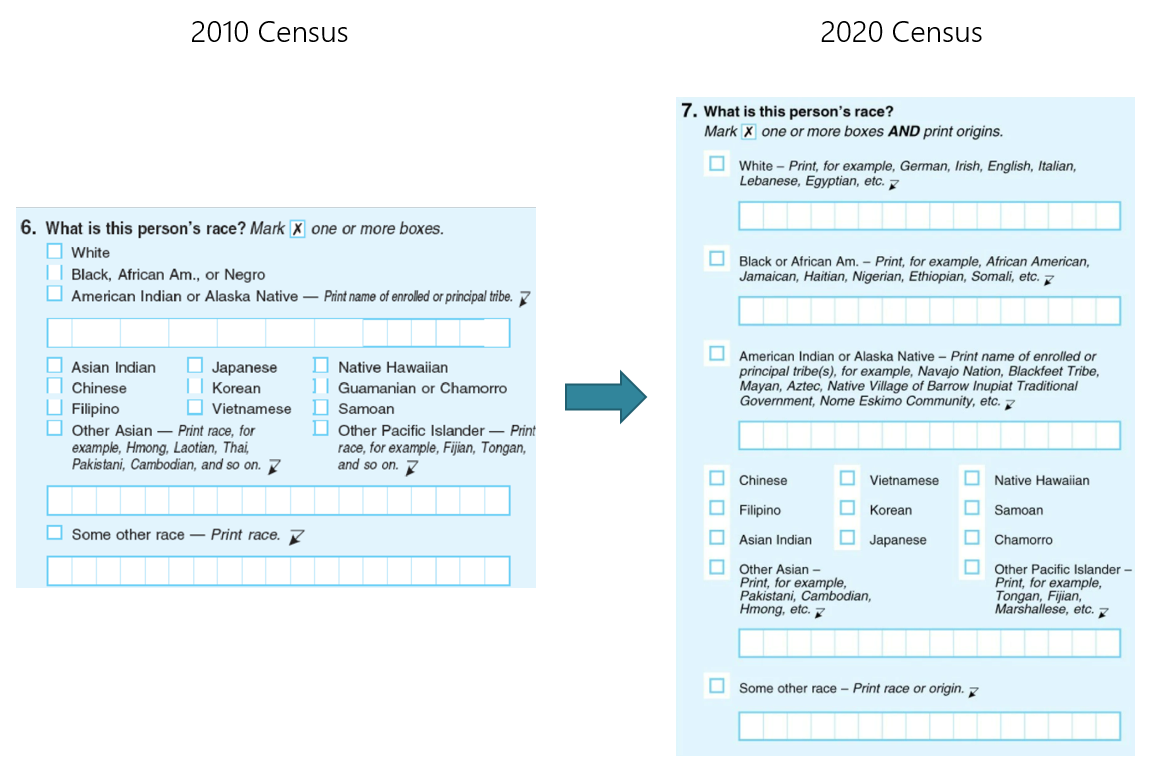Examining The New Way The 2020 Census Asked About Race
11/10/21 / Jim Pripusich

Photo by Scott Graham on Unsplash
The U.S. Census Bureau has systematically collected demographic data on Americans every ten years since 1790. Part of this effort includes asking Americans to define their race and ethnicity. The dynamic nature of how Americans identify has seen the Census adjust the way that it asks respondents about their race nearly every decade. 2020 was no different.
The most significant change to the 2020 Census’s race question was the addition of a dedicated write-in response area and examples for the “White” and “Black or African American” racial categories. Additionally, based on testing and feedback from respondents over the years between 2010 and 2020, the Census removed the term “Negro” from the “Black or African American” race category. Finally, the Census updated the write-in instructions for the “Some Other Race” category from “Print race” to “Print race or origin.”

The Census hopes that these additions and changes allow Americans a greater opportunity to self-describe their race and thus feel better represented in the Bureau’s data and collection process. Importantly, the 2020 census also increased the number of characters it collected for coding the write-in responses from 30 to 200. In the past, Americans who self-described multiple ethnic groups would have only been categorized based on the first 30 characters of their response. Additionally, while the 2010 Census only coded respondents into up to two racial groups, the 2020 survey expanded this to six. These updates allow the Bureau to better capture the full spectrum of racial identities in the country.
While the 2020 Census allowed for a more detailed racial response, there are still areas for improvement. The Bureau collects race and ethnicity data in accordance with standards set by the Office of Management and Budget (OMB). One standard developed and enforced by the OMB dictates that the Census must collect two separate questions on race and ethnicity. The latter refers specifically to whether or not a respondent is of Hispanic, Latino, or Spanish origin. In 2015, the Census conducted extensive research about the impacts of asking these race and ethnicity questions separately or in one combined question.
The Census’ internal research, along with outside studies, demonstrate that the two-question format may capture data that is not fully representative of the Latino population. Indeed, the Census’ research suggests that response rate among Hispanic, Latino, or Spanish origin respondents is lower when presented with the two-question format than a combined race and ethnic origin question. A 2020 Pew study found that only about half of Hispanic respondents (53%) said their 2020 Census response matched their self-description of their race/ethnicity compared to 97% of Black respondents and 100% of White respondents. To the Census Bureau’s credit, it did plan to combine the race and ethnicity questions into one for the 2020 census, but the previous administration and Office of the Management and Budget did not release a decision allowing the update in time.
Taken together, the Census has improved questions around race and ethnicity to better capture the detailed identities of Americans today, but still has more potential progress to make in the future.
